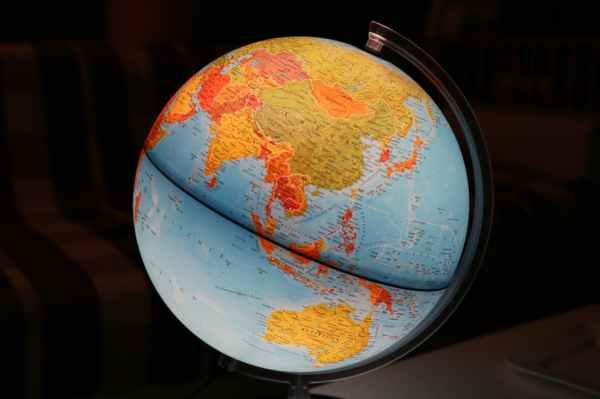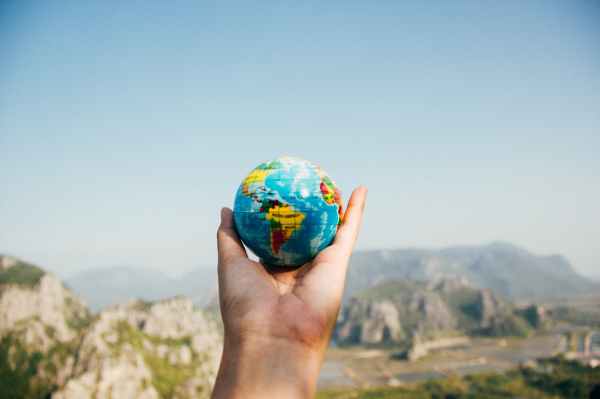Origin of the SDGs
In September 2015, the UN General Assembly, one of the main bodies of the organisation, approved the 17 Sustainable Development Goals (commonly known as SDGs) with 169 targets ‘of an integrated and indivisible nature covering the economic, social and environmental spheres’.
The process of developing these goals took more than two years of negotiations between member states, public consultations and interaction with civil society.
The UN itself defines it as ‘a plan of action for people, planet and prosperity, which also intends to strengthen universal peace and access to justice’.
The resolution adopted by UN member states recognised ‘that the greatest challenge facing the world today is the eradication of poverty and affirms that without poverty eradication there can be no sustainable development’.
The SDGs have their immediate antecedent in the Millennium Development Goals (MDGs), eight human development goals set by the then 189 UN member states in 2000, with a target date of 2015.
What are the Sustainable Development Goals?
These goals were created with the intention of building a sustainable future, they are interrelated and also incorporate global challenges such as poverty, prosperity, peace, justice, environmental degradation, climate and inequality.
Let us now take a look at the SDGs as a whole and their main characteristics.
- Goal 1, end poverty. Put an end to poverty in all its forms in the world. More than 700 million people are still living in extreme poverty.
- Goal 2, zero hunger. Achieving a world free of hunger by 2030 does not seem easy, given that 735 million people (more than 9% of the world’s total) live in a state of chronic hunger. In addition, 2.4 billion people are moderately to severely food insecure. Paradoxically, one third of the world’s food is wasted.
- Goal 3, health and well-being. Although 146 countries or areas have achieved (or are on track to achieve) the SDG target for under-five mortality, child immunisation has fallen by the most in three decades and deaths from malaria and tuberculosis have increased.
- Goal 4, quality education. Equitable, inclusive and quality education promoting learning opportunities is another of the goals, although there are currently more than 600 million young people worldwide who lack basic skills in mathematics and reading.
- Goal 5, gender equality. As well as being a basic right, gender equality is the basis for progress towards a prosperous and peaceful world in a world where one third of women aged 15-49 have experienced physical and/or sexual violence. This cross-cutting goal must be central to policies, budgets and institutions.
- Goal 6, clean water and sanitation. Something that is very easy to achieve in some parts of the world, but not so easy to achieve in others. In fact, lack of water is a problem that affects 40% of the world’s population. Although it is true that efficiency in the use of this liquid has increased by 9%, water stress and scarcity is still a concern in many regions of the world.
- Goal 7, Affordable and clean energy. Affordable, safe, modern and sustainable energy is essential in a world where three billion people do not have access to clean fuels or cooking technologies. However, it is true that access to electricity increased from 87% to 91% between 2015 and 2021.
- Goal 8, decent work and economic growth. While it is true that there has been an increase in labour productivity and a decrease in the unemployment rate worldwide, it is true that one fifth of the world’s youth population is neither working nor studying.
- Goal 9, industry, innovation and infrastructures. Resilient infrastructure, sustainable industrialisation or the promotion of innovation is essential for issues such as transport, irrigation, energy or information and communication technologies is crucial to empower communities in many countries.
- Goal 10, reducing inequalities. Within and between countries, inequality threatens both economic and social development. For example, the poorest 40% of the world’s population earn less than 25% of the world’s income.
- Goal 11, Sustainable cities and communities. More inclusive, safe, resilient and sustainable cities are essential in view of the prospect that in 2050 around 70% of the world’s population will live in urban environments. While 1.1 billion people currently live in slums, 2 billion more are expected in the next 30 years. Another fact to bear in mind is that 9 out of 10 people living in cities breathe polluted air.
- Goal 12, responsible production and consumption. Recycling becomes even more important in view of the prediction that the equivalent of three planets will be needed to maintain today’s lifestyles in 2050. Also related to world hunger, 931 million tonnes of food are wasted annually.
- Goal 13, climate action. Combating climate change and its effects is urgent. In fact, carbon dioxide emissions have multiplied by 50% since 1990. The target for 2030 is that global warming should be limited to 1.5°C above pre-industrial levels, for which emissions should already be in decline, something that is still a long way off.
- Goal 14, underwater life. More than three billion people need coastal and marine biodiversity for their livelihoods, which is why we need to conserve and sustainably use oceans, seas and marine resources. The magnitude of the oceans is such that covering three quarters of the Earth’s surface they contain 97% of the planet’s total water. Marine pollution is at extreme levels with more than 17 million metric tonnes polluting the oceans in 2021, with this figure expected to double by 2040.
- Goal 15, life of terrestrial ecosystems. While oceans occupy 75% of the Earth’s surface, forests are home to 80% of all animal, insect and plant species on the planet. Yet, for example, agricultural expansion is responsible for almost 90% of global deforestation.
- Goal 16, peace, justice and strong institutions. Tens of millions of people around the world are fleeing war, persecution and conflict. Alarmingly, in 2022 there was a 50% increase in civilian deaths in armed conflict.
- Goal 17, partnership to achieve the goals. Achieving the above goals could create 380 million new jobs by 2030 and generate $12 trillion in market opportunities.
Although improvements are taking place, overall the measures that are aimed at achieving the SDGs, according to the UN itself, ‘are not yet progressing at the speed and scale needed’.
Telefónica and the SDGs
Telefónica’s commitment to the SDGs and the 2030 Agenda is part of the company’s ESG strategy to harness the power of digitalisation to build a greener future and help society, always with strict levels of governance oversight that allow the operator to lead by example.
Since the publication of the Sustainable Development Goals, Telefónica has been analysing which goals and targets it contributes most decisively to, considering technical and commercial capabilities and the connections between the different SDGs.














